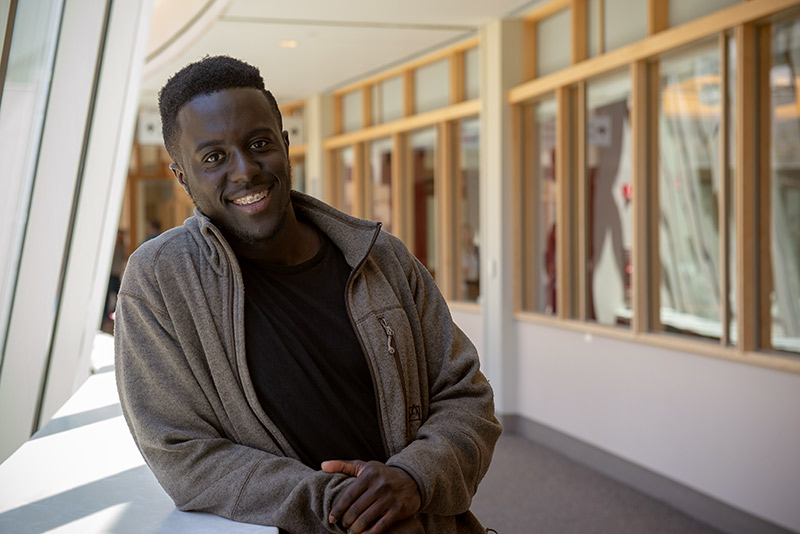Linda Schadler, currently the vice provost and dean of undergraduate education and the Russell Sage Professor in Materials Science and Engineering at Rensselaer Polytechnic Institute (RPI), has been appointed as dean of the College of Engineering and Mathematical Sciences at the University of Vermont.
“We are fortunate to have attracted Dr. Schadler to our academic community,” said UVM President Tom Sullivan. “She is one of the world’s leading researchers in her field, she is well respected in the academic community, and she possesses valuable senior leadership experience. We look forward to working with Dr. Schadler as a member of the University’s academic leadership team.”
UVM Provost David Rosowsky lauded Schadler’s passion for innovation. “I look forward to working closely with Dr. Schadler to elevate the visibility and impact of the College, creating innovative new programs and opportunities for our students, and supporting the College faculty and their research. Linda is a proven leader and a steadfast advocate for academic quality and scholarly impact.”
Schadler is excited to be joining UVM and said, “It is clear that there is wonderful collegiality in the College community, and a commitment to excellence and integrity that is widely respected. I believe the college is well poised to achieve even higher levels of excellence in both pedagogy and research. I cannot wait to be part of that journey!”
As vice provost and dean of undergraduate education, Schadler created the Teaching and Learning Collaboratory and Beta Classroom, an experimental space for testing new classroom technologies, as well as a rotating faculty board that shares best practices and awards pedagogy seed grants. She worked with the Faculty Senate to develop a new core curriculum for Rensselaer and has been an integral part of Rensselaer’s new curriculum initiative, the Arch at Rensselaer. Prior to her current position, she was the associate dean of academic affairs in the School of Engineering and led several strategic initiatives. She had oversight for the Manufacturing Innovation Learning Laboratory (MILL) and the Multidisciplinary Design Laboratory (MDL). Several of the new programs she developed in the School of Engineering at RPI have been implemented Institute-wide, including a new approach to first- and second-year advising (Advising Hubs).
Schadler’s research focuses on the nanodielectric, mechanical, and optical properties of polymer nanocomposites. Her work has impacted both fundamental understanding of polymer nanocomposite behavior and applications. She has also been an innovator in education including being one of the executive producers of the Molecularium (a planetarium show that takes a K-12 audience down into the world of atoms and molecules).
Schadler has received more than $13 million in research funding as principal investigator or co-principal investigator and also has been an active participant in two large centers: the Nanoscale Science and Engineering Center (NSEC) for the Directed Assembly of Nanostructures, and an Engineering Research Center (ERC): Smart Lighting, both funded by the National Science Foundation. She was the Director of Education and Outreach for the NSEC and implemented a summer research program with specific partnerships with historically black colleges and universities and women’s colleges to provide a year-round research experience for those students.
She co-authored more than 160 refereed journal publications, 10 book chapters, she holds 12 patents, and has been invited to speak about her research around the world. She has supervised 33 Ph.D. students, 13 M.S. students and more than 50 undergraduate students in her laboratory.
Schadler graduated from Cornell University in 1985 with a B.S. in Materials Science and Engineering and received a Ph.D. in Materials Science and Engineering in 1990 from the University of Pennsylvania. She is an associate editor for the Journal of Materials Research, as well as a Fellow of both the Materials Research Society and ASM International. Schadler is a former member of ASM International’s Board of Trustees and the National Materials Advisory Board.
Source: UVM News












 Mechanical engineering major and outdoor enthusiast Ali Gohlke-Schermer was originally attracted to UVM for the class sizes, and the proximity to the lake and mountains. But by sophomore year, she was looking for a deeper connection to her studies; she found it in the lab of Professor Ryan McGinnis, where she researched the effect of bike handlebar position on a rider’s physiological response and kinetics. She also completed an internship with nearby manufacturer Semiprobe. These experiences were key to landing a job at Global Foundries, where she’ll soon start as an equipment engineer. “I was super involved, and I didn’t just depend on class work.” She hopes to someday attend grad school. “This is definitely not the end,” she says. “I like to learn.”
Mechanical engineering major and outdoor enthusiast Ali Gohlke-Schermer was originally attracted to UVM for the class sizes, and the proximity to the lake and mountains. But by sophomore year, she was looking for a deeper connection to her studies; she found it in the lab of Professor Ryan McGinnis, where she researched the effect of bike handlebar position on a rider’s physiological response and kinetics. She also completed an internship with nearby manufacturer Semiprobe. These experiences were key to landing a job at Global Foundries, where she’ll soon start as an equipment engineer. “I was super involved, and I didn’t just depend on class work.” She hopes to someday attend grad school. “This is definitely not the end,” she says. “I like to learn.”